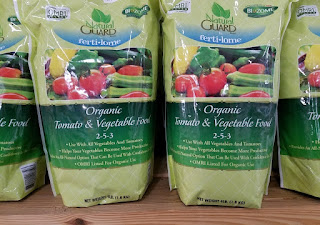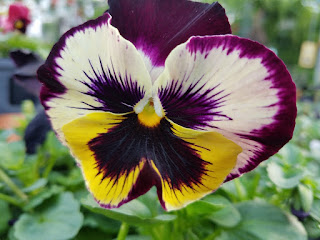There are two different types of vegetables: cool season and warm season. Cool season crops include Arugula, Lettuce, Spinach, Chard, Onions, Cabbage, Peas and Kale. Cool season crops will germinate in cold soil and mature in cooler weather and shorter periods of daylight, meaning they are perfect for planting in early spring. This means you can get an early start on your edible garden by planting cool season crops as soon as the soil is workable. Begin by adding two to three inches of organic material to your garden bed. This is called amending the soil. Our high-quality organic soil amendments are produced locally and come bagged for your convenience. For an existing garden, spread two to three inches of organic amendments on the surface of your garden bed and work it in. A single bag of Earth Essentials Sheep, Peat and Compost will cover ten square feet, two inches deep.
This is also a good time to add some organic fertilizer. Organic fertilizers will carry the OMRI seal on the bag. OMRI stands for Organic Material Review Institute. Products with the OMRI seal have gone through rigorous testing to assure the ingredients are organic. Place a small amount of organic fertilizer in the bottom of each row or planting hole. As the seeds sprout, the roots of your new plants can grow into it. Cool season crops can be planted when the soil and air temperatures are at least 40 degrees Fahrenheit. At these temperatures, lettuce, spinach, kale, radish and cabbage seeds can be sown directly in the soil and they will germinate and quickly set root. Cool season crops can also be planted from starts at this time of the year. When it comes time to plant your starts, it’s best to do so early in the morning or on a cloudy day. For an extra boost, add a handful of worm castings to the planting spot. Remove the plant from its container and place it in the soil, being careful to plant it at the same depth it was in the seed container, then water thoroughly. Cool season crops generally don't need protection from spring temperatures, but keep some floating row cover handy just in case the weather turns extreme. While you’re at it, plant some cool season color to go along with your vegetables.



No comments:
Post a Comment